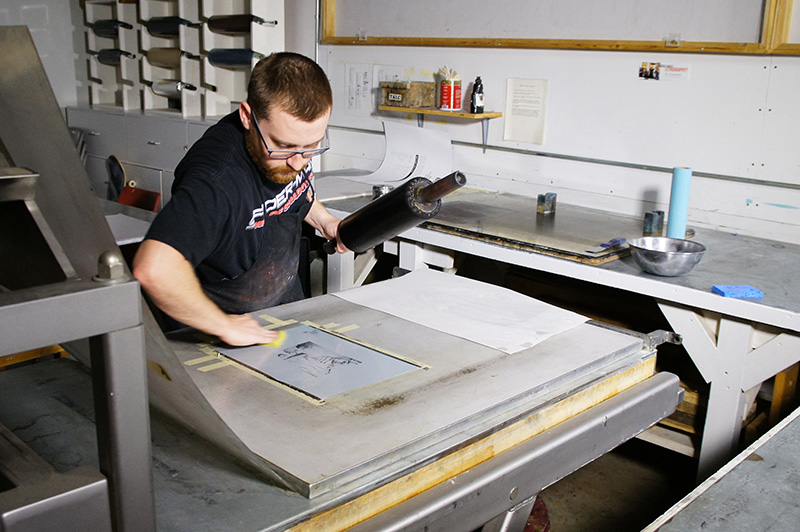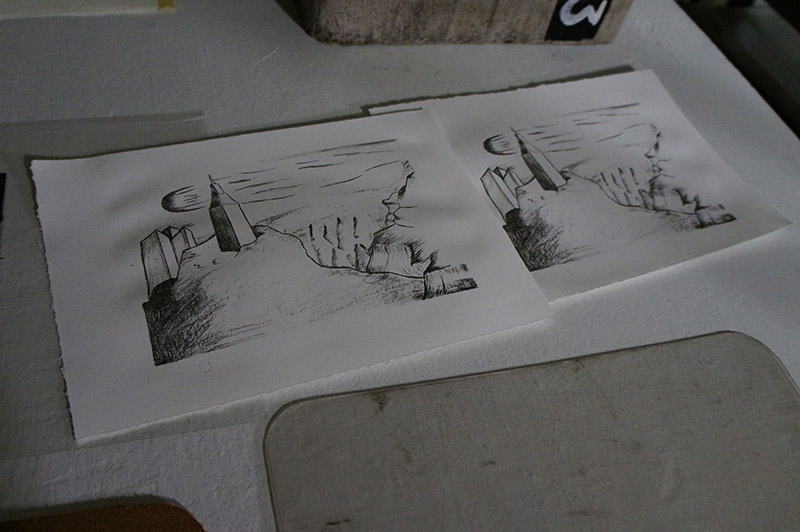This blog is one of a six-part series highlighting the processes behind printmaking and the art shown in the exhibition that was on view May 26 – July 22, 2017, titled 528.0 See our YouTube channel for more printmaking videos over the coming weeks.
This week Taber Youmans, MSU Denver BFA in Printmaking, demonstrates the lithographic process. This process uses the fundamental property that oil and water do not mix, ink is repelled in unwanted areas and held in place to print the desired image. Follow along as Taber tells us about the history of lithography while creating an original print.

Historically lithographs were made using limestone but modern offset lithography uses polyester, Mylar, or flexible aluminum plates. These plates are covered with light-sensitive emulsion while lithographs made on stone are drawn on with a wax crayon. Taber demonstrates the method of using a modern plastic plate to create a fine art original print. Offset lithography is used to produce posters, maps, books, newspapers – just about any smooth, mass-produces item with print and graphics.

